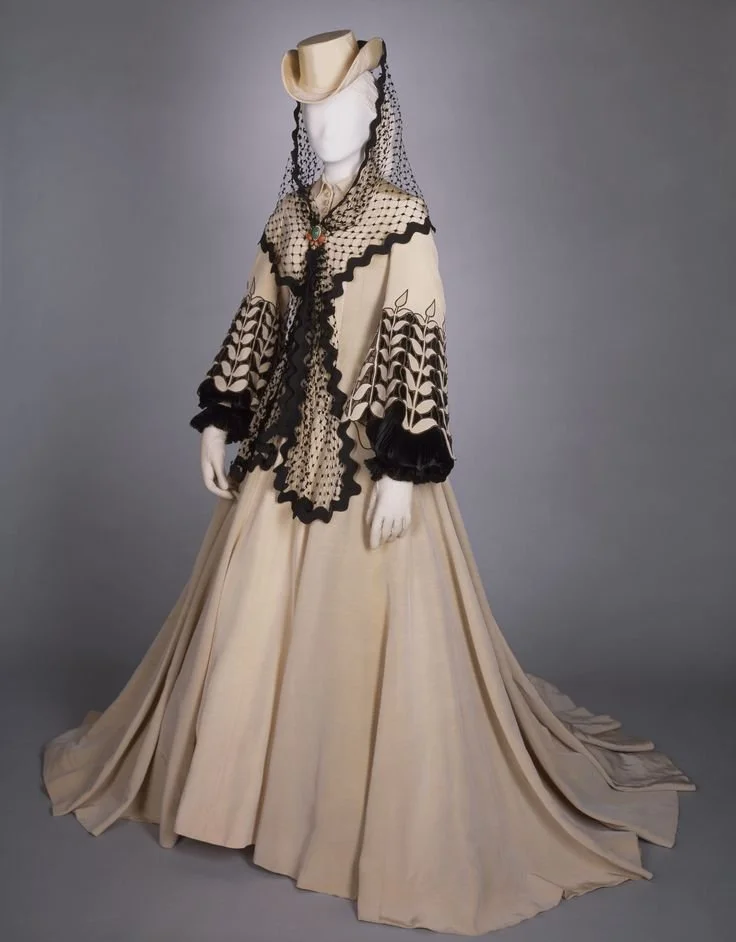O'Hara’s Honeymoon Gown
Vivien Leigh, ‘the Bengaline gown’
Gone with the Wind, MGM 1939,
Designer: Walter Plunkett │Courtesy of Christopher Sullivan
by DR. CHRISTOPHER SULLIVAN
I think I started collecting for the same reasons other people do. Memorabilia is a physical representation of an emotional experience.
The story of what happened to the various Scarlett O’Hara costumes after the making of Gone with the Wind is…complicated. Producer David O. Selznick owned them as part of Selznick International Pictures. This is in contrast to most of the costumes for secondary actors, which were made by Western Costume Company (based on costume designer Walter Plunkett’s designs) and rented to Selznick International Pictures. Selznick donated several of the Scarlett costumes to various charities and museums after the completion of the film. He also let Vivien Leigh keep the black dress seen at the end of the film, as well as a nightgown. He traded back several costumes to Western Costume Company because of damage done to rental costumes during filming. Ultimately, five costumes were given to the Ransom Center at the University of Texas at Austin where they remain today. The ‘barbecue’ dress was initially given to Los Angeles County Museum of Art (a few years ago it went to the Los Angeles County Museum of Natural History).
The ‘Bengaline’ gown (which Scarlett O'Hara wears during her New Orleans honeymoon) went to Western, but in the 1950s, the famed costume collector Helen Larson acquired it. After her death, it was sold at Butterfield and Butterfield Auctions, about 26 years ago, which is when it came to me. I must say I was stunned when I saw the auction catalogue. It was so rare back then to see any Gone with the Wind costumes come up for auction, much less a Scarlett costume. I had been saving up to buy a new car, but decided I could buy a car anytime — buying an actual screen-used Scarlett O’Hara costume might be once in a lifetime. So I placed an absentee bid…and I won!
The dress was in excellent condition, but I had the highly reputable textile conservator Cara Varnell evaluate it. Vivien Leigh had very long legs and a relatively short torso and narrow waist. While attractive to see, these dimensions created great stress on the costume. The stitching around the waist and shoulder blades carried all the weight of the heavy skirt and the threads were breaking. Cara provided back-up stitches so that her threads would break before Walter Plunkett’s original stitching. Another key to textile conservation is using a specialised vacuum to gently remove dust, as dust particles have sharp edges that can accelerate the breakdown of textile threads.
A few observations about this costume I find interesting. Some fans are surprised to see the dress is a beige colour, when it appears bright white in the movie. This is not a discoloration; Plunkett purposely made it that colour. You cannot use bright white when filming in Technicolor, as it will glare and create blurred edges. The beige costume films white in Technicolor. The front panel of the skirt is a lighter shade than the rest of the skirt. This gives a three-dimensional illusion when filming as well as creates a slimming effect for the actress (as though Leigh needed slimming!) The hat and veil we display were apparently missing, but Plunkett recreated them himself in the 1970s for a display at the Academy.
I knew a spectacular costume would be the centrepiece of the collection, as well as open doors. Indeed it has. The Kent State University Museum was the first place I displayed the dress and their expertise over the years has been invaluable to me. For twenty-one years, the costume has resided in Marietta, GA, at the Gone with the Wind Museum. I hope visitors to the museum will appreciate that the stories behind the writing of the book and the making of the film are as compelling as the plot of Gone with the Wind itself. Who would have thought an unassuming housewife from Atlanta —who wrote chapters out of sequence for her own amusement — would wind up writing literally The Great American Novel and winning the Pulitzer Prize?
DR. CHRISTOPHER SULLIVAN is a retired endocrinologist from Akron, Ohio and his extensive collection has been on display at the Marietta Gone with the Wind Museum outside Atlanta for the past 21 years. He has exhibited portions of his collection at The Kent State University Museum, Walt Disney World, Self Family Arts Center in Hilton Head, and for Turner Classic Movies’ Lights, Camera, Classics Exhibition. He first read Gone with the Wind at thirteen, having no idea what it was about, only determined to read a big book. Taken with the compelling storyline, he promptly turned it over and read it a second time. He saw the film six months later and has been accumulating ephemera ever since. He says that collecting is just another term for accumulating — once you’ve spent a lot of money.
Learn more about Dr. Sullivan’s collection at the official website of Marietta’s Gone with the Wind Museum: https://www.gwtwmarietta.com/

